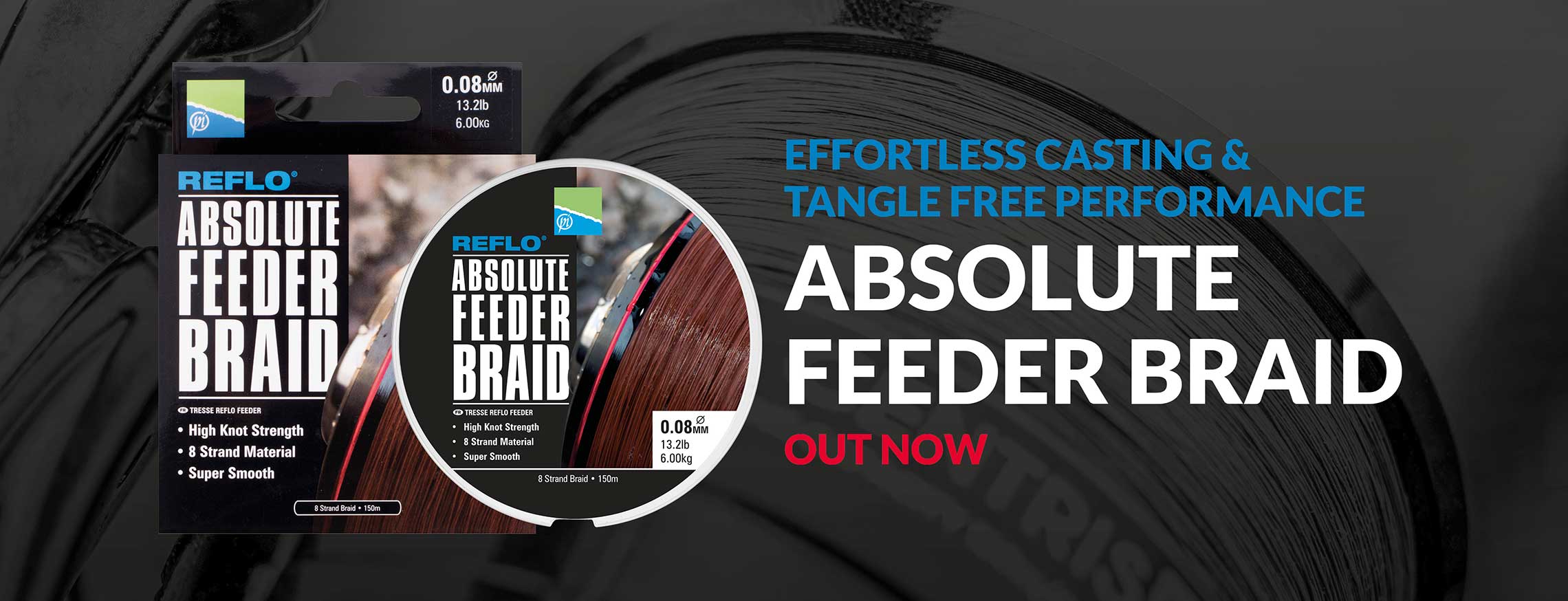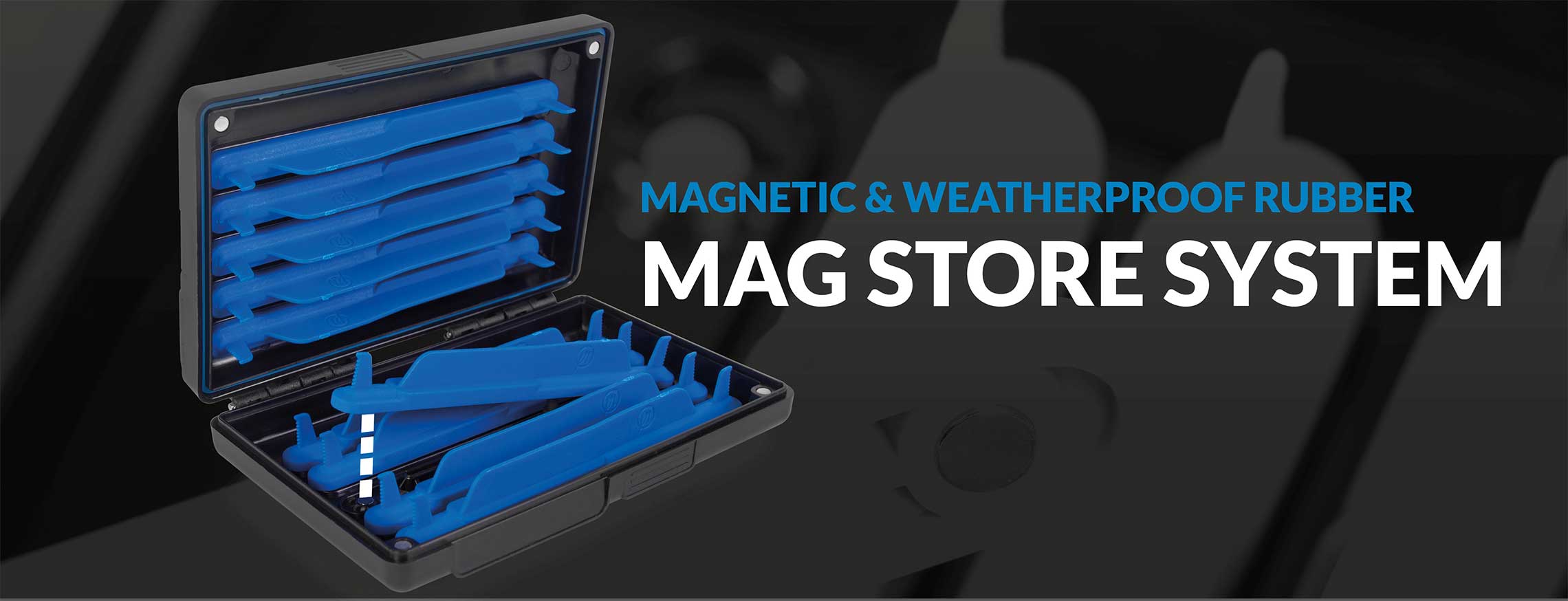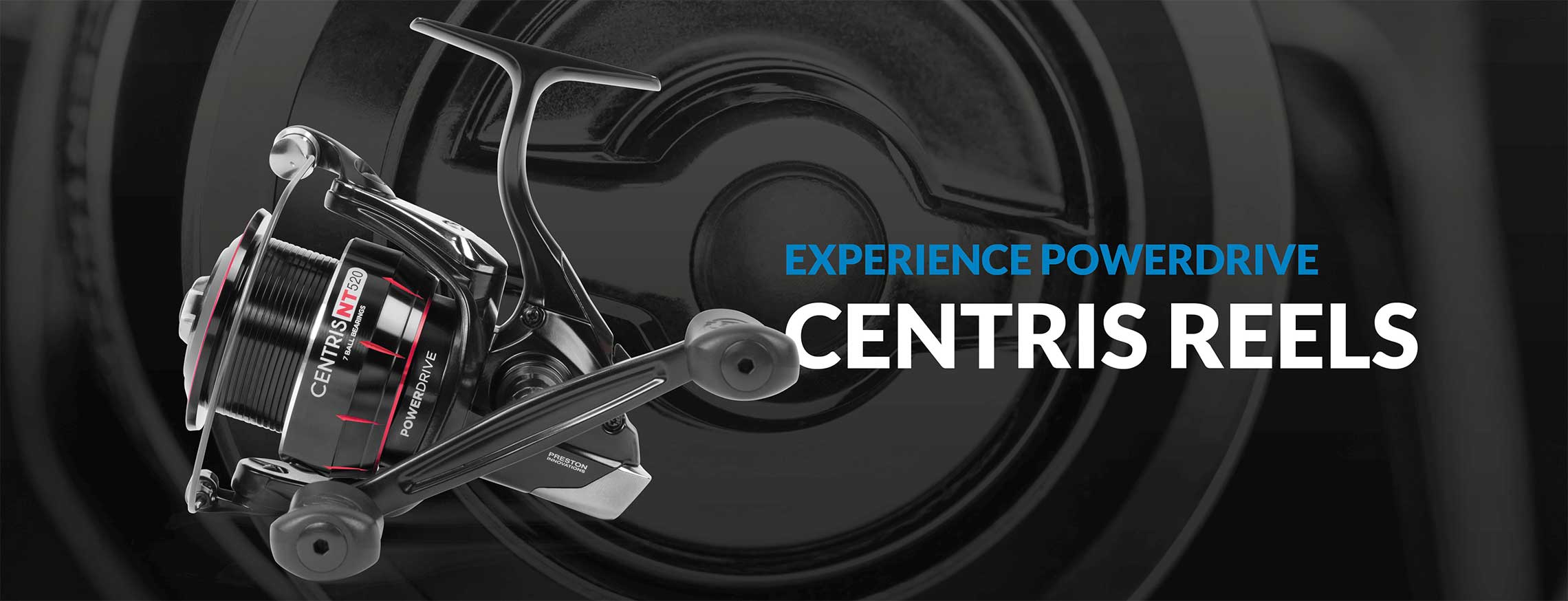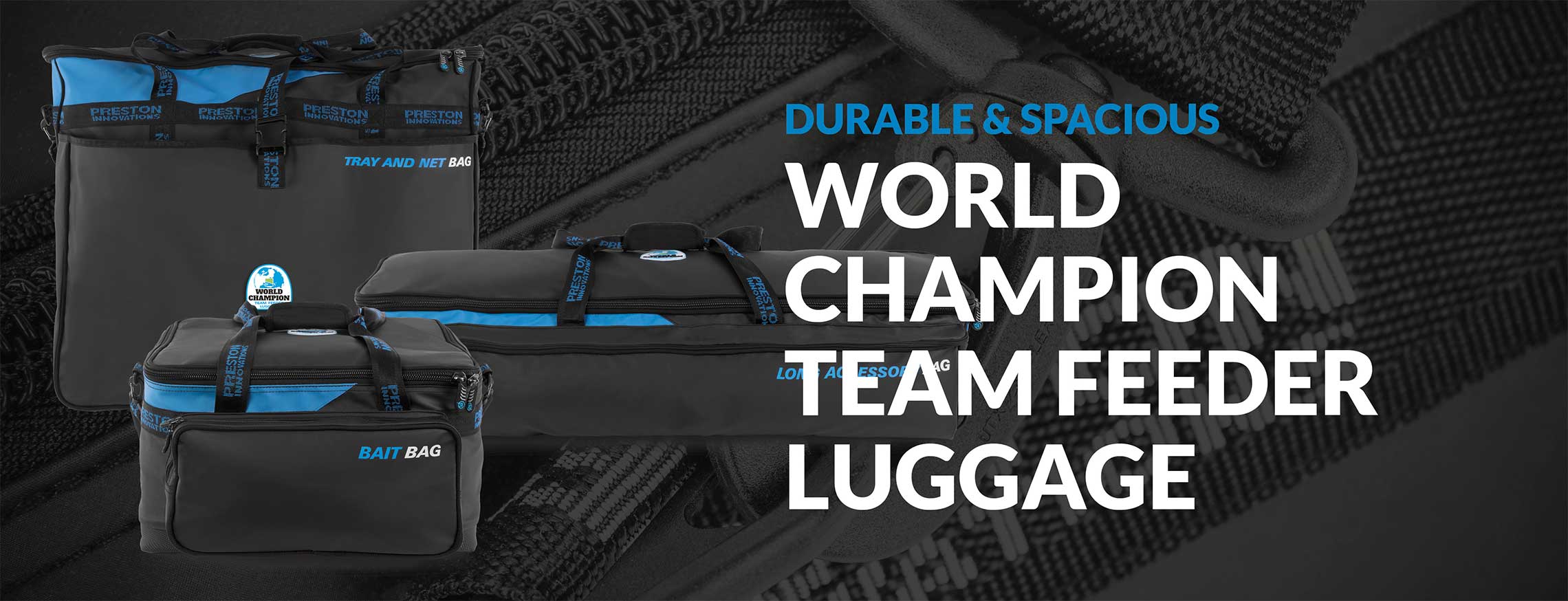Snake lake skills
Share the Snake lake skills article:
Share
Don’t be rattled by Snake Lakes, add some venom to your approach with the help of England International and prolific match winner, Des Shipp...
Since the creation of snake-type lakes, commercial fishing has seen a big change. With more and more of these fisheries appearing all over the country, learning how to conquer them and keep the fish coming is of great importance.
For this feature, I’m on Paddock lake, part of the Acorn Fishery complex in sunny Somerset. The lake is typical of the majority of Snake type lakes; 13-16m wide, a very uniform lake bed and full of fish! My main plan of attack is to build up a swim on the far shelf.
 13m of my new GIS Absolute XS Pole reaches the far bank perfectly, right where I want to have my main swim. After setting up my seatbox, OffBox Accessories and sorting out my bait I’ll then get my rigs out and plumb up.
13m of my new GIS Absolute XS Pole reaches the far bank perfectly, right where I want to have my main swim. After setting up my seatbox, OffBox Accessories and sorting out my bait I’ll then get my rigs out and plumb up.
Where to start?
There are three or four lines that I’ll target on these venues. Occasionally when the fishing is tougher, rotating around the swims will keep the fish coming but on a day when they’re really having it, you’ll only need the one! In this swim, 13m against the far bank is my first line; the second comes back to 11.5m, at the base of the far bank slope. Plenty of bait gets knocked down the shelf when the fish are rooting around and it usually ends up here. It’s also an area that gets overlooked by a large amount of anglers. The third is at 5m in the deeper water – an often overlooked area – and finally the margins.
The business end
My rigs are simple; most of the fishing will be with pellets so there is no need to complicate things. Due to the size of the fish I’ve opted for size 11 Hollo Elastic in my Pulla Kit, the rig line is 0.13mm Reflo Power, going down to a small 4x12 Chianti pole float. I’ll swap to a Tyson 1 if the depth is less than 18 inches. Below this is a 6 inch hooklink of 0.11mm Reflo Power and the hook I’ve chosen to use is a size 18 PR 36 with a small bait band on the hair. There is a chance you will get lots of liners and finicky bites when fishing against the island, banding a hard pellet ensures that the bait will stay on for longer unlike fishing with expanders and leaves the hook exposed to convert more bites. I’ve placed four small number 9 split shots on the rig. These are placed 18 inches above the hook and with a 1.5 inch gap between each split shot. It’s as easy as that!
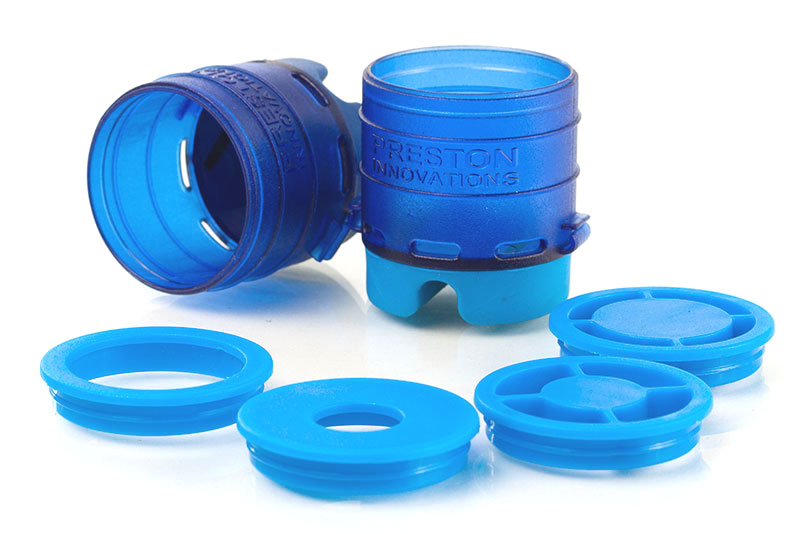 After using my Kup Kit to feed the swim with 4mm Sonubaits Krill Feed Pellets, I’ll start by using a 6mm Krill Feed Pellet as a hookbait. All of my top kits have Uni CAD Pots attached to the end. Keeping the swim topped up with pellets is standard practice but keeping the bait tight and not spread around is essential when poking the rig up against an island. Practise this and you’ll win more matches!
After using my Kup Kit to feed the swim with 4mm Sonubaits Krill Feed Pellets, I’ll start by using a 6mm Krill Feed Pellet as a hookbait. All of my top kits have Uni CAD Pots attached to the end. Keeping the swim topped up with pellets is standard practice but keeping the bait tight and not spread around is essential when poking the rig up against an island. Practise this and you’ll win more matches!
Slap Happy
I can’t really talk about this shallow style of fishing on the bottom without discussing the ‘slapping’ technique. And no, I don’t mean clipping your competitors around the ear-hole! When you mention ‘slapping’ to a match angler, I’d put money on them thinking about fishing up-in-the-water. Well not this time! With the swim only being around 18 inches to 2 foot deep the rigs are easy to work with. After two or three slaps, imitating the sound of loose-fed pellets, let your hookbait fall through the water. Most bites will come just as the pellet reaches the bottom of its fall. Be ready – lots of bites like this will pull the elastic out of your pole before you’ve even seen the float cock! It’s a winning technique and one that saves a bit of bait, too.
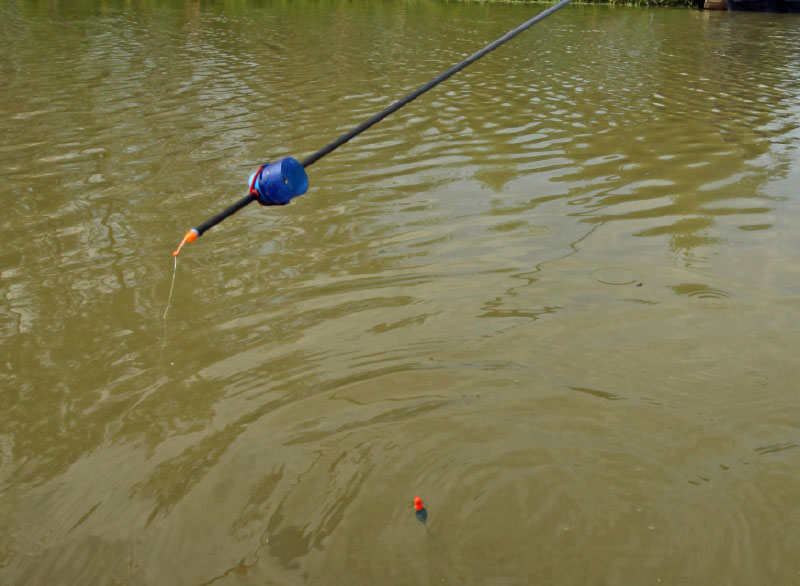 1. Let your bait settle on the bottom, if you don’t get a bite within two minutes it’s time to slap.
1. Let your bait settle on the bottom, if you don’t get a bite within two minutes it’s time to slap.
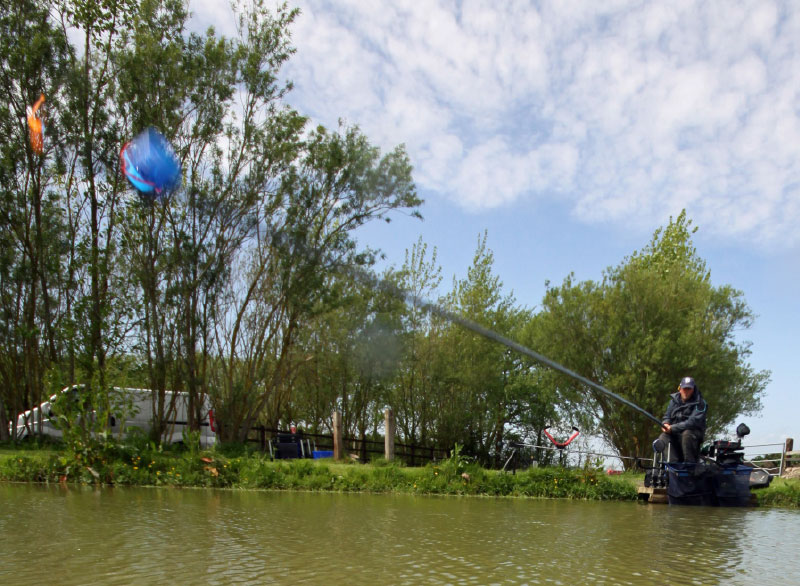 2.In one smooth motion lift the rig out of the water.
2.In one smooth motion lift the rig out of the water.
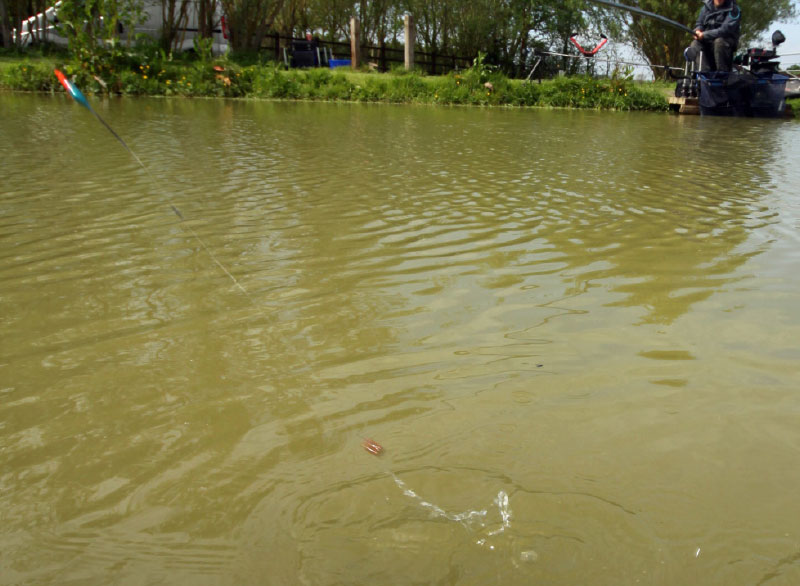 3. Swing the rig around the pole; imagine trying to draw a circle with the rig in the air.
3. Swing the rig around the pole; imagine trying to draw a circle with the rig in the air.
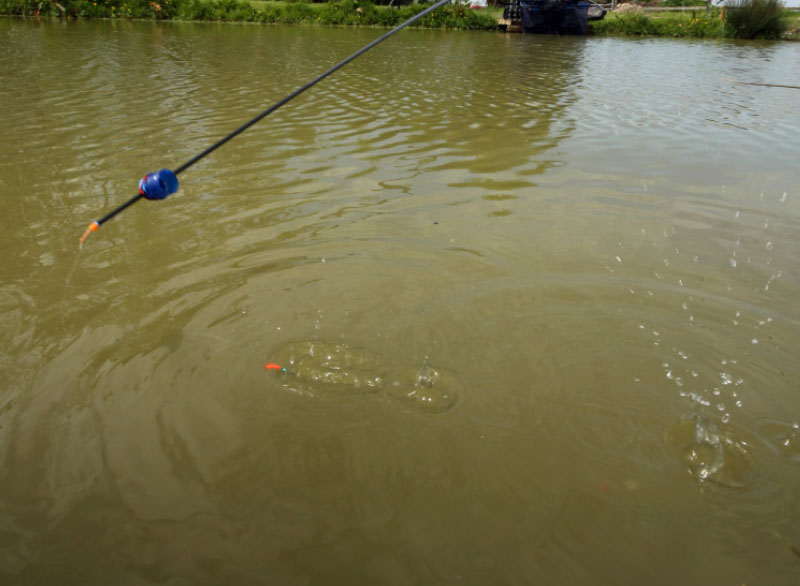 4 .Let the rig slap onto the water over your baited area; get ready for a super-fast bite!
4 .Let the rig slap onto the water over your baited area; get ready for a super-fast bite!


